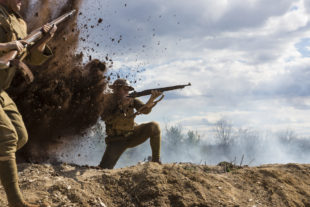
BY PETER DORFMAN
The Meuse-Argonne Offensive, near the close of World War I, was the largest and costliest independent American offensive in history, leaving an estimated 110,000 Americans dead or wounded. As its centennial approaches, visitors to the memorial cemetery at the battleground in France will gain a better understanding of the experience of American soldiers who fought there through an immersive film created by Bloomington filmmaker Jo Throckmorton.
The film was funded by the American Battle Monuments Commission (ABMC), principal caretakers of the Meuse-Argonne American Cemetery and Memorial that sits just east of Romagne-sous-Montfaucon, on what was France’s Eastern Front. “We wanted to offer a deeper understanding of what it was like to be a soldier in 1918,” Throckmorton says. “This is neglected history, and we really wanted to do it justice.”
The film will be projected on a super wide screen, installed in a period building at the cemetery, starting in 2017. “It’s not a narrative film with fully developed characters,” Throckmorton explains. “The experience is more like combat footage. Only minimal text is shown on screen; the only dialogue is the soldiers shouting.”
Throckmorton chose to work with soldiers from the 3rd U.S. Infantry, traditionally known as The Old Guard, instead of actors for the film. The Old Guard is the Army’s official ceremonial unit and escort to the president. “We used about 40 soldiers, plus four actors that we brought in for some relatively intimate close-ups,” he says. “The soldiers understood the tactics, and they cared about the details more than actors would.”
The film was shot using historically accurate uniforms and equipment (including a vintage 1917 Renault FT tank), in a field in Pennsylvania that serves as a World War I memorial and site for reenactments.
“I worked with hard-core experts,” Throckmorton says. “We worked out every detail, down to a historically accurate wrapper on a candy bar that would be part of a doughboy’s ration. We had to show the realities of battle, but also the boring details of life between battles.”
The attention to detail was worth the effort, says Throckmorton. “The ABMC told us, when we were done, that this was the most realistic reenactment footage ever produced for them.”
Photo Gallery:


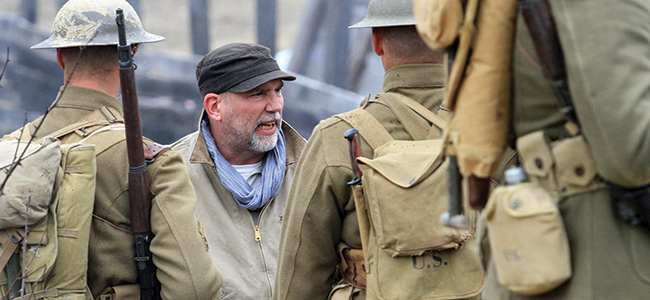
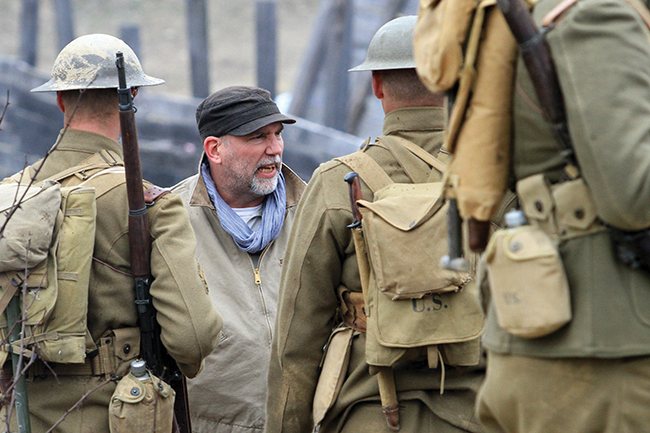
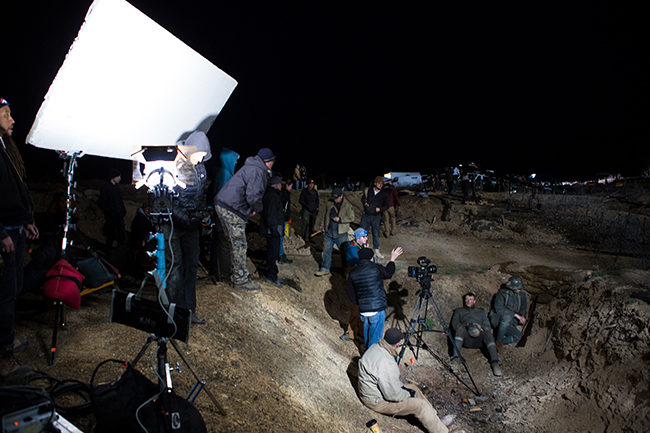
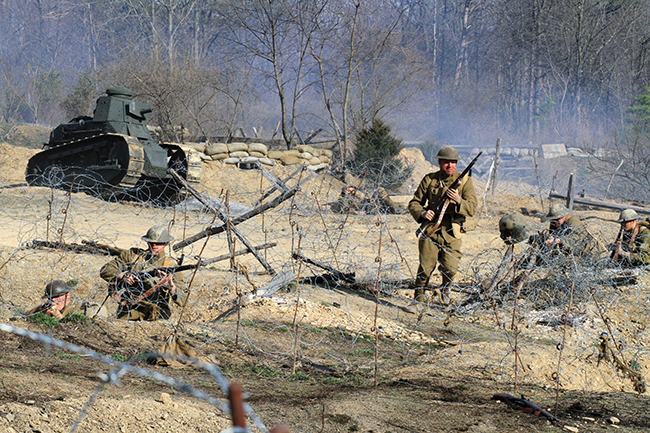
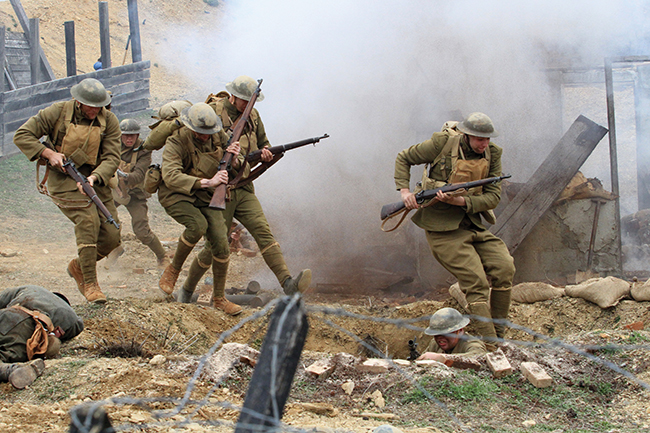
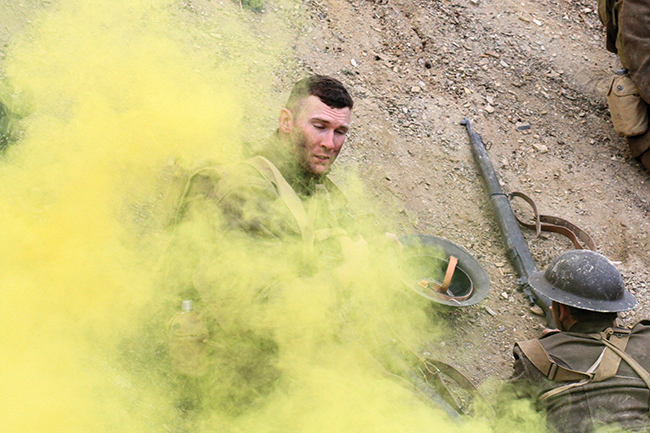

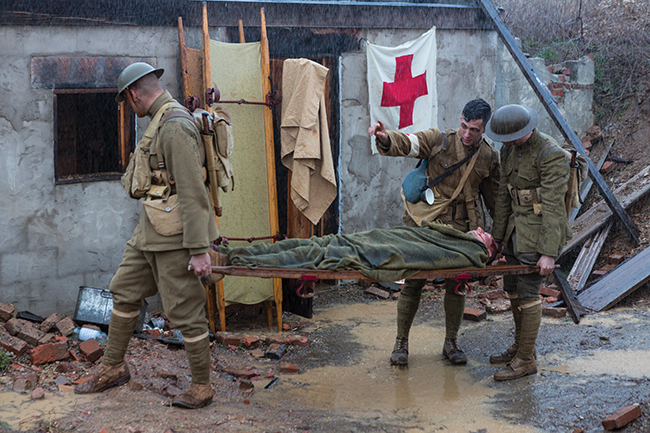
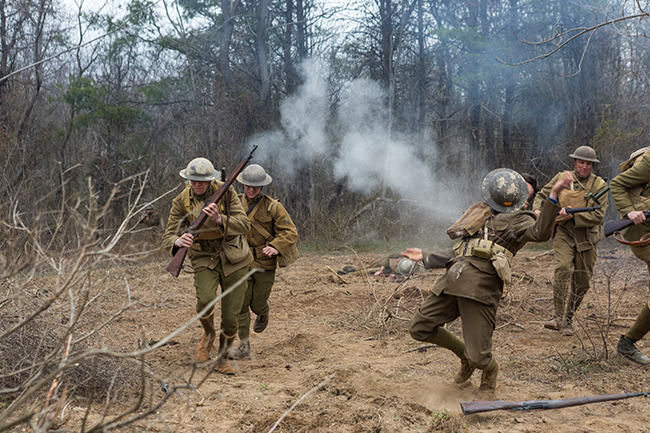
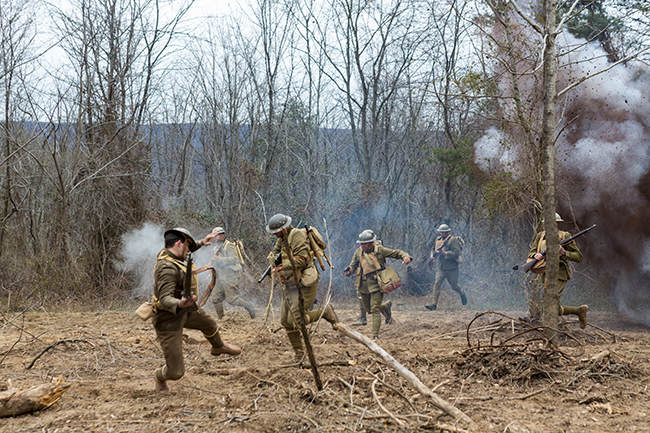
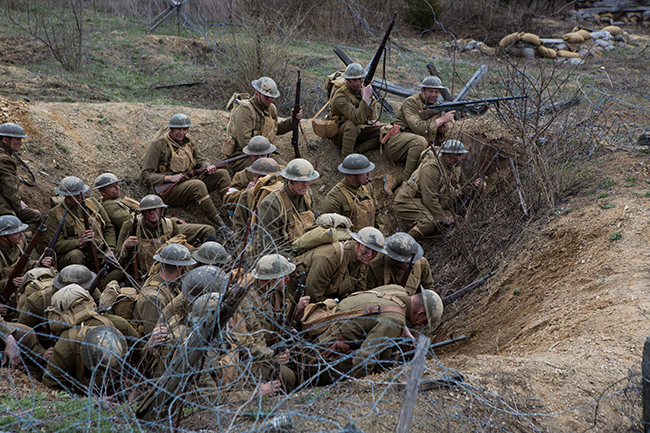
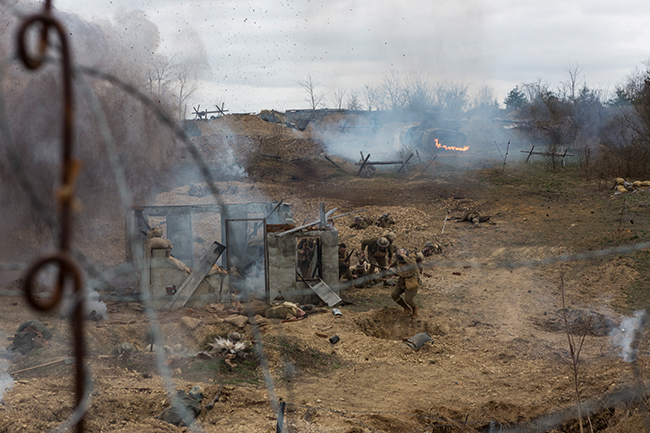
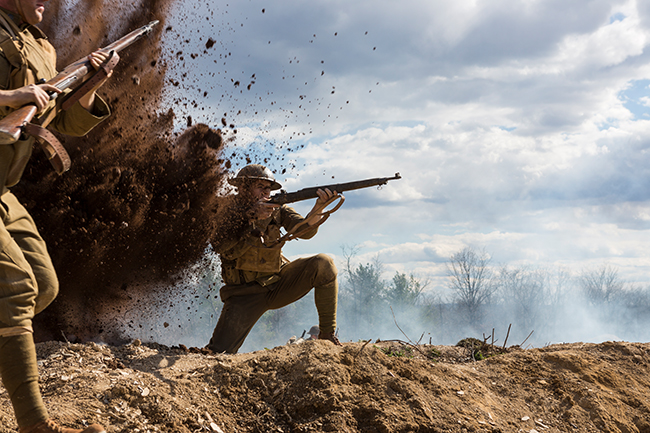
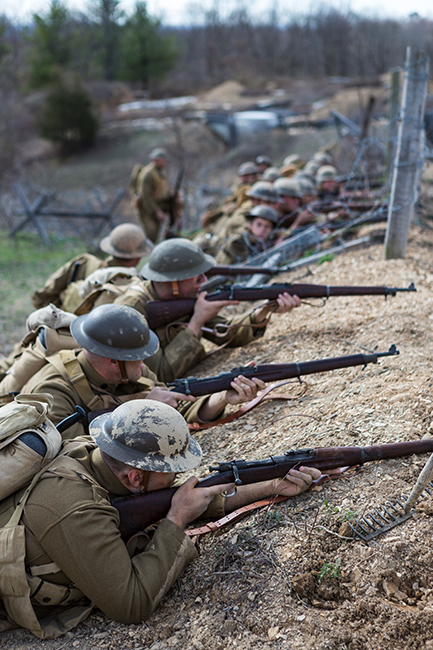
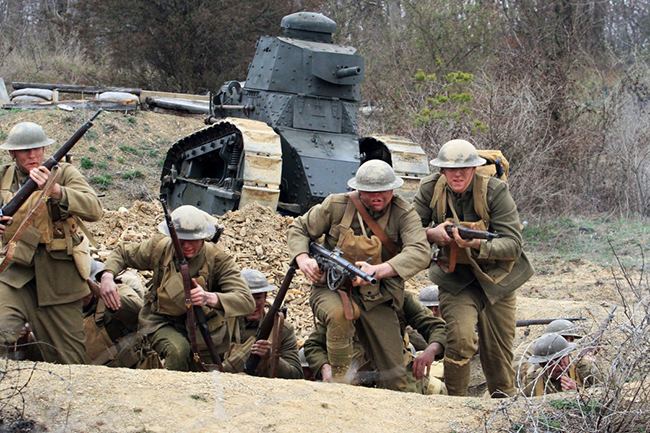
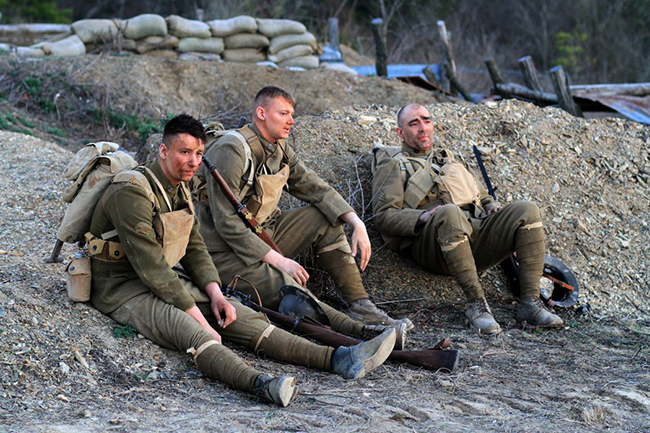
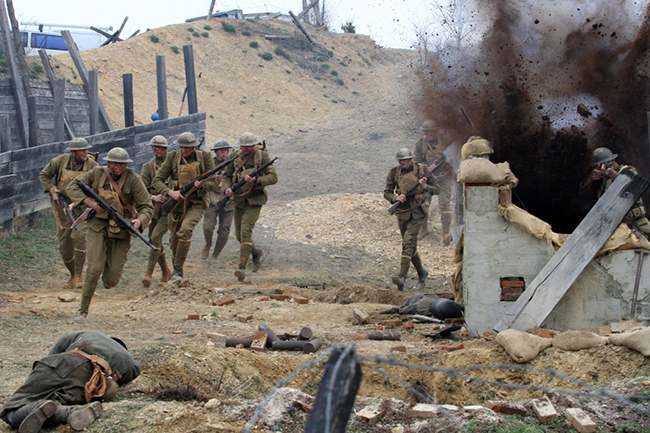
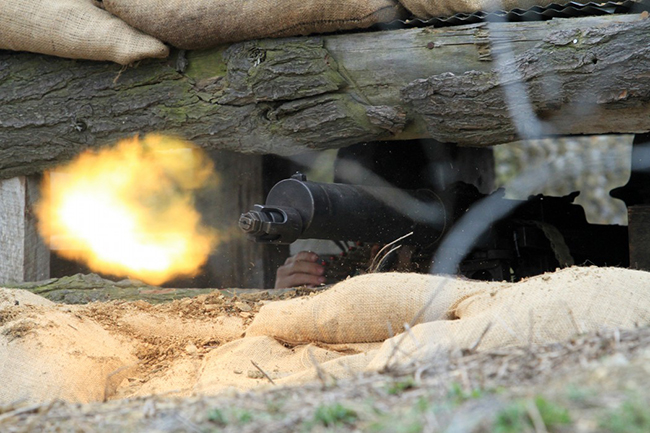
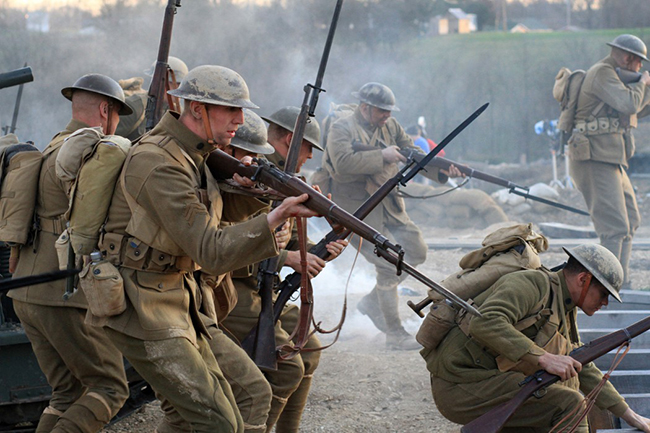

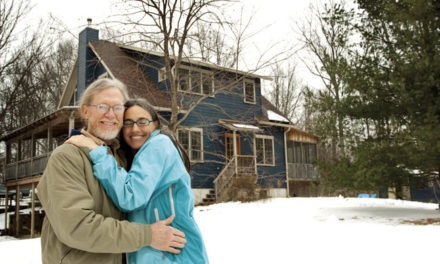
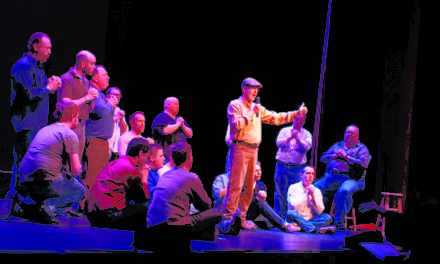
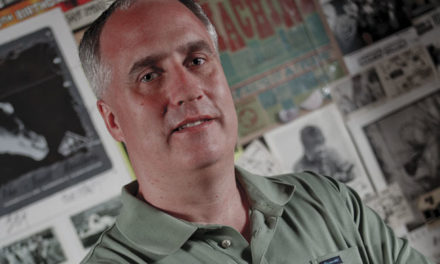







Where can I find this film?